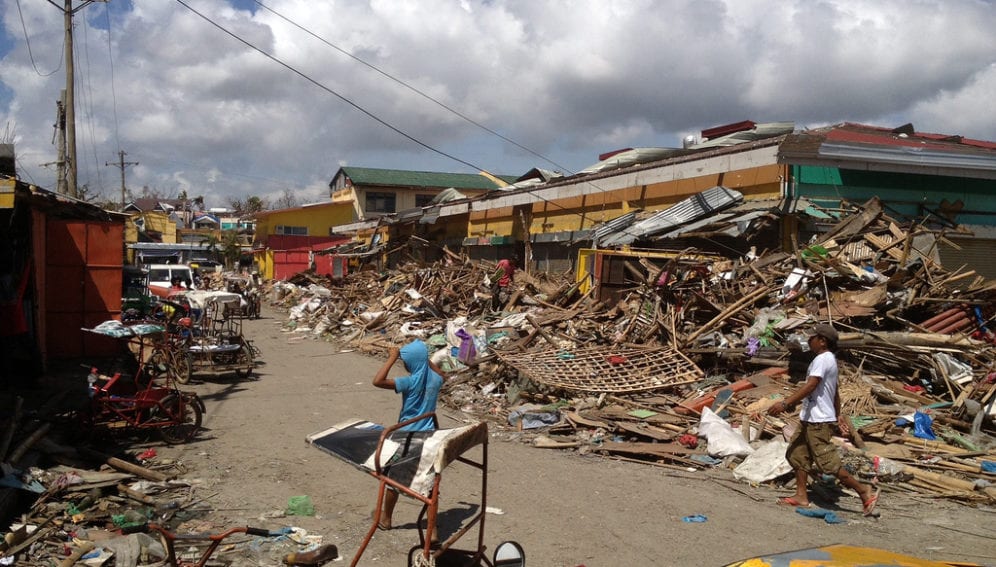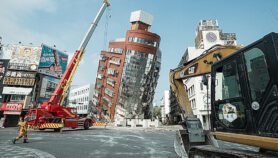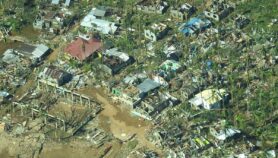By: Crispin Maslog
Send to a friend
The details you provide on this page will not be used to send unsolicited email, and will not be sold to a 3rd party. See privacy policy.
Super Typhoon Haiyan has been described as the world’s most powerful typhoon ever to make landfall on record.
With maximum wind speeds of more than 350 kilometres per hour that caused the sea to surge as high as 15 metres, the storm flattened about 90 per cent of the Philippine city of Tacloban. It also severely damaged scores of other cities and towns in its path, killing over 5,000 people according to the official count. More than 25,000 people were injured, about 1,600 are missing and bodies are still being extricated from the sea of debris left in the typhoon’s wake.
The catastrophe that hit the Philippines can be blamed on climate change. And, by chance, the latest round of UN climate change talks began in Warsaw, Poland, on 11 November — three days after Haiyan struck. [1]
Normally, these talks are as complex as they are crucial, involving scientific issues that most people find bewildering. But the juxtaposition of Haiyan and the Warsaw talks brought the issue of climate change to life.
At the start of the 12-day talks, Naderev Sano, head of the Philippine delegation to the UN climate talks, received a standing ovation when he delivered a passionate speech urging the conference to strike a deal quickly to avert future climate change calamities. [2]
Sano, whose father’s home city is Tacloban, announced that he was going on a water-only fast for the duration of the conference in sympathy with the Filipino victims of the super typhoon and ‘until meaningful progress is made’. Some of Sano’s relatives died in the typhoon.
But the talks dragged on as usual and, eight days later, UN secretary-general Ban Ki-moon addressed the conference, saying that the unprecedented super typhoon should spur environment ministers around the world to renew their efforts to curb global warming.
“I am deeply concerned that the scale of our action is still insufficient to limit the global temperature rise to below two degrees Celsius [3.6 Fahrenheit] from pre-industrial levels […] Climate change threatens current and future generations — we need to look no further than last week’s catastrophe in the Philippines,” he said. [3]
Smarter cities
There is no room for further debate over whether climate change is really happening. There is already enough evidence from scientific research that global warming is increasing and is caused by humans. There is sufficient proof to show that global warming has caused ocean waters to rise and weather patterns to change, threatening Pacific island nations as well as South-East Asian countries.
The debate should now focus on what nations can do to slow global warming, who should foot the bill and how to prepare for the catastrophes that climate change will bring. Various things can be done in our region.
First, as soon as the relief and rehabilitation efforts for central Philippines in the wake of Haiyan have stabilised, the Association of Southeast Asian Nations and the Pacific Islands Forum should organise a climate change summit for the region’s environment ministers and leaders to discuss the lessons learned from the Philippine experience.
One issue to examine would be how we adequately prepare for extreme weather calamities such as super typhoons that annihilate everything in their way — not only people and infrastructure — but also the local economy and local governments. Such catastrophes are even more devastating for small Pacific islands.
Second, the Philippine government should seriously consider rebuilding destroyed cities on safer ground. Most cities in the country and across South-East Asia, such as Tacloban and, for that matter, Manila and Cebu City in the Philippines, and Bangkok in Thailand, lie near the coast where they are more vulnerable to storm surges and rising sea levels. Tacloban and other ravaged cities should be rebuilt on higher ground.
Third, urban planning should be used to build smarter and more-resilient cities. Among other things, a smarter city is one with stronger, weather-resistant buildings. Achieving this would mean waterproofing power and communication lines by putting them in tunnels underground.
Smarter cities also mean effective urban design and innovative practices that include “improving basic infrastructure such as communications, water and energy supplies with emphasis on shifting to more appropriate technologies and renewable energy sources”. [4]
Smarter cities, in the words of these planners, also means developing a smarter environment that “focuses on more prudent utilization of natural resources and the promotion of more conscientious practices such as the construction of green buildings and disaster risk management for enhanced sustainability”.
Smarter cities harness the power of technology to run and deliver efficient, modern public services. [5] We must retool for tomorrow’s deadly storms and ensure that future storms don’t destroy these services.
As the Chinese proverb says, every crisis presents danger as well as an opportunity. Out of the crisis brought about by this storm, we have a huge opportunity to rebuild vulnerable cities in the region into model cities of the future. We can start with Tacloban.
This article has been produced by SciDev.Net’s South-East Asia & Pacific desk.
References
[1] Yahoo! News UN climate change summit begins in Poland (Yahoo! News, 11 November 2013)
[2] Sibierski, M. Philippines storm spurs passion for poor at climate talks (Google.com, 20 November 2013)
[3] Le Roux, M. Citing Philippines, UN chief urges action at climate talks (www.newsdaily.com, 19 November 2013)
[4] School of Urban and Regional Planning Planning Smarter Cities Towards a Better Quality of Life — Conference Structure (University of the Philippines, accessed 25 November 2013)
[5] Inside Government The National Future Cities Conference 2013: Delivering Modern Services for National Growth — Overview (Inside Government, accessed 25 November 2013).














